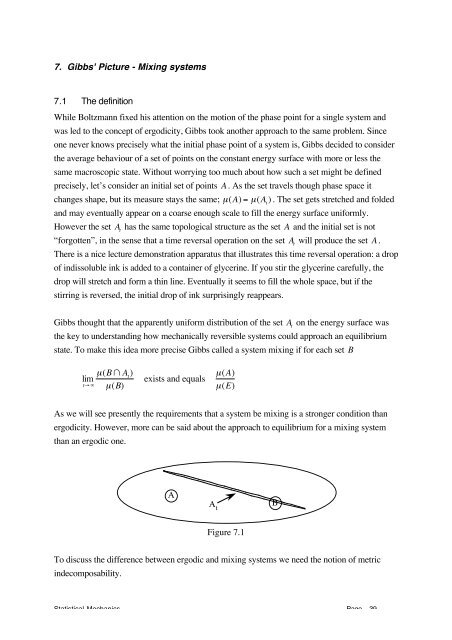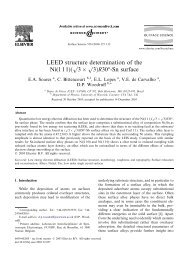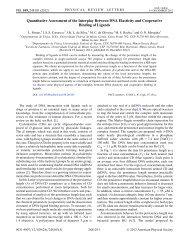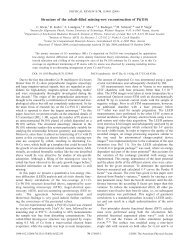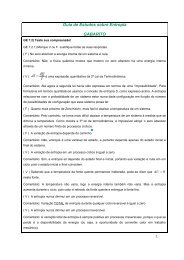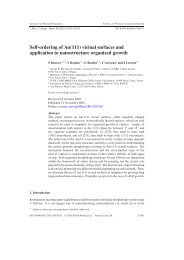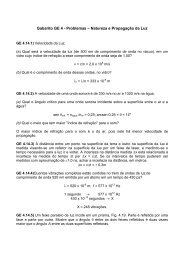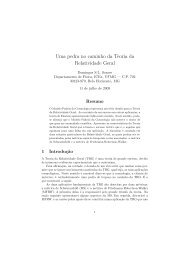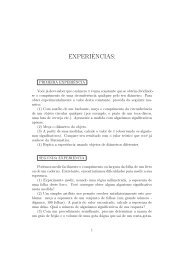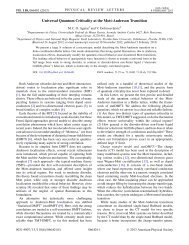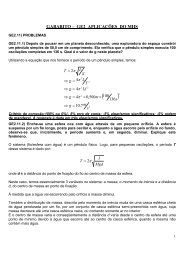Fundamental Statistical Mechanics
Fundamental Statistical Mechanics
Fundamental Statistical Mechanics
You also want an ePaper? Increase the reach of your titles
YUMPU automatically turns print PDFs into web optimized ePapers that Google loves.
7. Gibbs' Picture - Mixing systems<br />
7.1 The definition<br />
While Boltzmann fixed his attention on the motion of the phase point for a single system and<br />
was led to the concept of ergodicity, Gibbs took another approach to the same problem. Since<br />
one never knows precisely what the initial phase point of a system is, Gibbs decided to consider<br />
the average behaviour of a set of points on the constant energy surface with more or less the<br />
same macroscopic state. Without worrying too much about how such a set might be defined<br />
precisely, let’s consider an initial set of points A . As the set travels though phase space it<br />
changes shape, but its measure stays the same; µ(A) = µ(A t ) . The set gets stretched and folded<br />
and may eventually appear on a coarse enough scale to fill the energy surface uniformly.<br />
However the set At has the same topological structure as the set A and the initial set is not<br />
“forgotten”, in the sense that a time reversal operation on the set At will produce the set A .<br />
There is a nice lecture demonstration apparatus that illustrates this time reversal operation: a drop<br />
of indissoluble ink is added to a container of glycerine. If you stir the glycerine carefully, the<br />
drop will stretch and form a thin line. Eventually it seems to fill the whole space, but if the<br />
stirring is reversed, the initial drop of ink surprisingly reappears.<br />
Gibbs thought that the apparently uniform distribution of the set At on the energy surface was<br />
the key to understanding how mechanically reversible systems could approach an equilibrium<br />
state. To make this idea more precise Gibbs called a system mixing if for each set B<br />
µ(B ∩ At )<br />
lim<br />
t→∞ µ(B)<br />
exists and equals µ(A)<br />
µ(E)<br />
As we will see presently the requirements that a system be mixing is a stronger condition than<br />
ergodicity. However, more can be said about the approach to equilibrium for a mixing system<br />
than an ergodic one.<br />
A<br />
A t<br />
Figure 7.1<br />
To discuss the difference between ergodic and mixing systems we need the notion of metric<br />
indecomposability.<br />
<strong>Statistical</strong> <strong>Mechanics</strong> Page 39<br />
B


